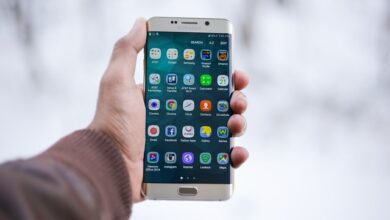
The Importance of Mobile Security
Mobile security refers to the protection of smartphones, tablets, and other portable devices from threats that could compromise their integrity, confidentiality, and availability. As mobile devices serve as gateways to personal data, banking information, and corporate systems, their security becomes crucial not only for individuals but also for businesses and governments.
Common Threats to Mobile Security
- Malware: Malicious software designed to exploit vulnerabilities in mobile operating systems can steal data, track user activity, or damage the device. Mobile malware is often delivered through apps, malicious websites, or unsecured networks.
- Phishing: This social engineering tactic tricks users into giving away sensitive information by masquerading as legitimate entities, often via email or text messages. Phishing attacks are becoming increasingly sophisticated, targeting mobile devices through various channels.
- Data Theft: Mobile devices often carry vast amounts of personal data, from contact lists to financial information. Unauthorized access to this data, whether through hacking or physical theft of the device, poses significant risks to privacy and security.
- Man-in-the-Middle (MitM) Attacks: This attack involves intercepting communication between two parties to steal information or inject malicious content. Public Wi-Fi networks are particularly vulnerable to MitM attacks, as they often lack encryption.
- Ransomware: This type of malware locks a device’s content and demands payment to restore access. While ransomware has traditionally targeted computers, it is increasingly being aimed at mobile devices as well.
Why Mobile Security Is More Challenging
Mobile security presents unique challenges compared to traditional desktop or laptop systems. Mobile devices are inherently more vulnerable for several reasons:
- Portability: Mobile devices are carried everywhere, making them more likely to be lost or stolen. Once in the wrong hands, a lack of security measures can lead to unauthorized access to sensitive information.
- App Ecosystem: Unlike desktops, where software installation is tightly controlled, mobile devices operate in an open app ecosystem. Many app marketplaces, especially third-party ones, are less regulated, increasing the risk of downloading malicious applications.
- Frequent Connectivity: Mobile devices are often connected to the internet via various networks, including public Wi-Fi, cellular networks, and Bluetooth. This constant connectivity can expose devices to more attack vectors.
The Role of Privacy in Mobile Security
While security focuses on protecting devices from external threats, privacy concerns the control individuals have over their personal information. As mobile devices collect a vast array of data — including location, browsing history, contacts, and health metrics — the potential for misuse is significant.
Key Privacy Issues on Mobile Devices
- Data Collection by Apps: Many mobile apps collect excessive amounts of user data, often without clear consent. This data can include personal information, browsing habits, location history, and even biometric data. In many cases, this data is sold to third parties for marketing purposes.
- Location Tracking: Mobile devices are equipped with GPS technology, enabling apps and services to track a user’s precise location. While this is essential for navigation apps, it can be exploited by advertisers or hackers, compromising user privacy.
- Surveillance: Governments and law enforcement agencies may exploit mobile devices for surveillance purposes. While this can be justified in certain legal circumstances, widespread surveillance programs can infringe on civil liberties and personal privacy.
- Third-Party Access: Some apps and services share user data with third-party companies without clear consent. Once this data is shared, it becomes challenging to control how it’s used, stored, or protected.
Privacy Settings and Their Importance
Many users are unaware of the privacy settings available on their mobile devices, which can significantly enhance their control over personal information. Both iOS and Android operating systems offer privacy settings that allow users to manage app permissions, location tracking, and data sharing. Regularly reviewing and adjusting these settings is crucial for maintaining privacy.
- App Permissions: Most mobile apps request access to various device features, such as the camera, microphone, contacts, or location services. Users should review these permissions and only allow access when absolutely necessary.
- Location Services: Location data can be highly sensitive, as it reveals patterns of movement and behavior. Users should disable location services for apps that don’t need it and regularly review which apps have access to their location.
- Data Sharing with Third Parties: Users should be cautious of apps that share their data with third parties. Some apps offer options to limit or disable data sharing entirely, though this often comes at the cost of reduced functionality.
Best Practices for Enhancing Mobile Security and Privacy
Understanding the risks to mobile security and privacy is the first step in safeguarding personal information. However, taking practical measures to enhance protection is equally important. Here are some best practices to follow:
1. Use Strong Passwords and Biometric Authentication
Setting a strong password or using biometric authentication (such as fingerprint or facial recognition) is essential for securing mobile devices. A strong password should be at least eight characters long and include a mix of letters, numbers, and special characters. Many devices now support multi-factor authentication (MFA), adding an extra layer of security by requiring a second form of identification, such as a one-time code sent to a different device.
2. Keep Software and Apps Updated
Outdated software can contain vulnerabilities that cybercriminals exploit. Regularly updating the device’s operating system and apps ensures that the latest security patches are installed. Both iOS and Android release updates to fix security flaws and improve functionality.
3. Install Apps from Trusted Sources Only
Downloading apps from trusted sources, such as the Apple App Store or Google Play Store, reduces the risk of installing malicious software. Users should be wary of third-party app stores or direct downloads, which often lack the same level of security oversight.
4. Use a VPN for Secure Browsing
A virtual private network (VPN) encrypts internet traffic, protecting it from interception by hackers or malicious actors. VPNs are particularly useful when connecting to public Wi-Fi networks, which are often insecure and vulnerable to man-in-the-middle attacks.
5. Encrypt Your Device
Most modern smartphones support encryption, which protects the data stored on the device by making it unreadable to unauthorized users. Enabling encryption ensures that even if a device is lost or stolen, its data remains secure.
6. Regularly Back Up Data
Regular backups of mobile data, either through cloud services or physical storage, ensure that important information is not lost in the event of a security breach or device failure. Many mobile operating systems offer automated backup solutions.
7. Be Cautious with Public Wi-Fi
Public Wi-Fi networks are convenient but often insecure. Hackers can easily intercept data transmitted over these networks, making it crucial to avoid accessing sensitive information, such as banking details, while connected. When using public Wi-Fi, a VPN can add an additional layer of security.



